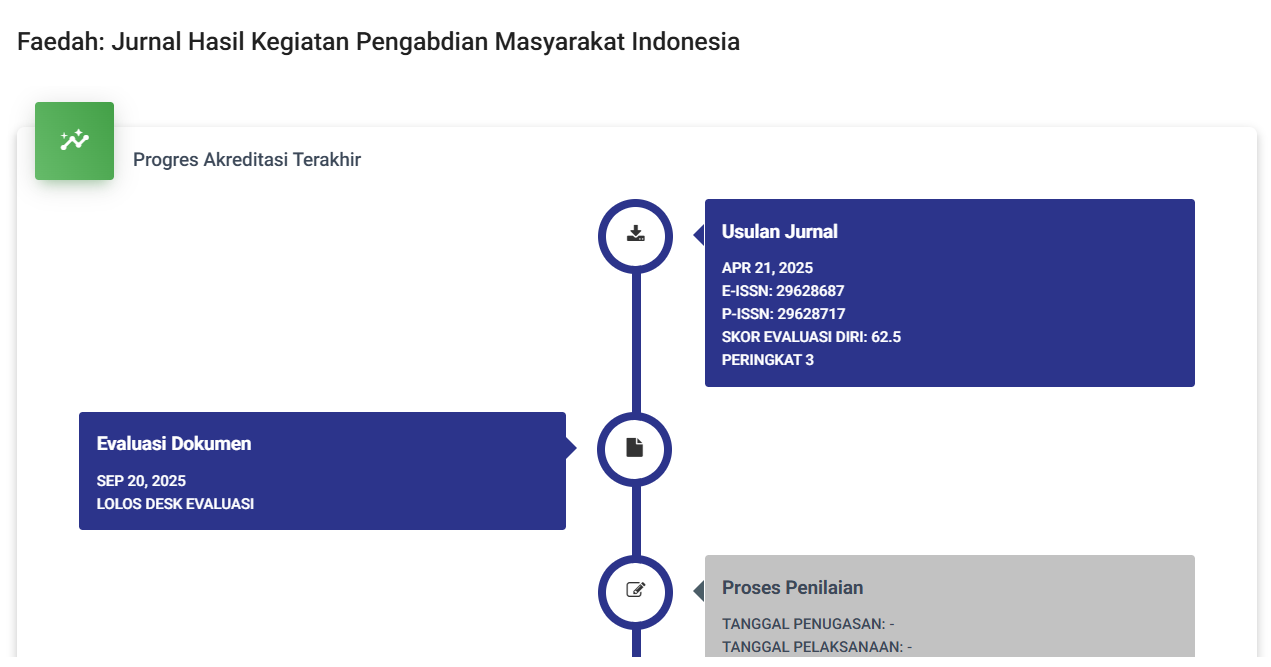Peran Rembuk Stunting Dalam Mewujudkan Anak Sehat Di Desa Teluk Pambang
DOI:
https://doi.org/10.59024/faedah.v1i4.330Keywords:
Community Service, Stunting Consultation, Teluk Pambang Village, Community Participation, Stunting PreventionAbstract
The problem of stunting is still a serious challenge in various regions in Indonesia, including in Teluk Pambang Village, which is a coastal and outermost area. Stunting is a condition of lack of optimal growth in children due to malnutrition and other risk factors, with long-term impacts that have the potential to hamper children's physical, cognitive and social development. Rembuk stunting is an effective method of involving various stakeholders, such as local communities, nutritionists, health workers, and other related parties. This activity aims to identify and address stunting problems and find alternative solutions to prevent stunting in Teluk Pambang Village. The community service program used a qualitative approach. The work procedure approach in this activity includes needs identification, team selection, focused discussions, situation analysis and strategy selection and evaluation. The results obtained found that this stunting meeting was effective in increasing community awareness, participation, and cooperation in stunting prevention efforts.
References
Laksono. A.D., dkk. 2022. Stunting among children under two years in Indonesia: Does maternal education matter?. Journal pone 17(7). doi: 10.1371/journal.pone.0271509
Torlesse et al. 2016. Determinants of stunting in Indonesian children: evidence from a cross-sectional survey indicate a prominent role for the water, sanitation and hygiene sector in stunting reduction. BMC Public Health: 1-11. Doi: 10.1186/s12889-016-3339-8
Purwanti. A.R., dkk. 2022. Kebijakan Pencegahan dan Strategi Penanganan Stunting di Kalurahan Donokerto Turi Sleman Yogyakarta. Jurnal Kewarganegaraan 6(1): 1757-1764
Saputri. R.A. 2019. Upaya Pemerintah Daerah Dalam Penanggulangan Stunting Di Provinsi Kepulauan Bangka Belitung. Jurnal Dinamika Pemerintahan 2(2): 152-168









